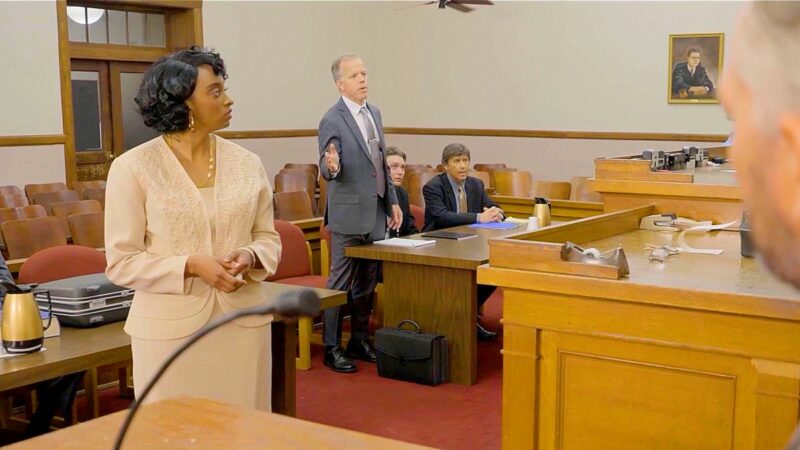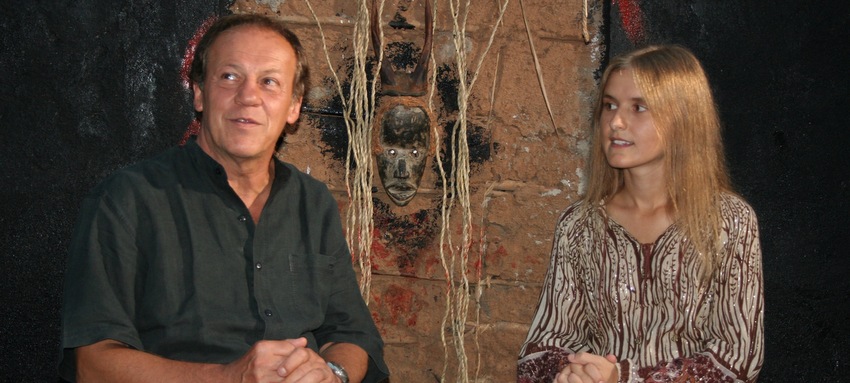
Film Director Bruno Pischiutta and Producer Daria Trifu on the set in Ghana
Programs: April 15, 2018
Case Study: The Making of ‘PUNCTURED HOPE: A Story About Trokosi & The Young Girls’ Slavery in Today’s West Africa
Punctured Hope is a story that takes place nowadays in Ghana, West Africa. It is inspired the by the real-life events of the film’s lead actress, Belinda Siamey.
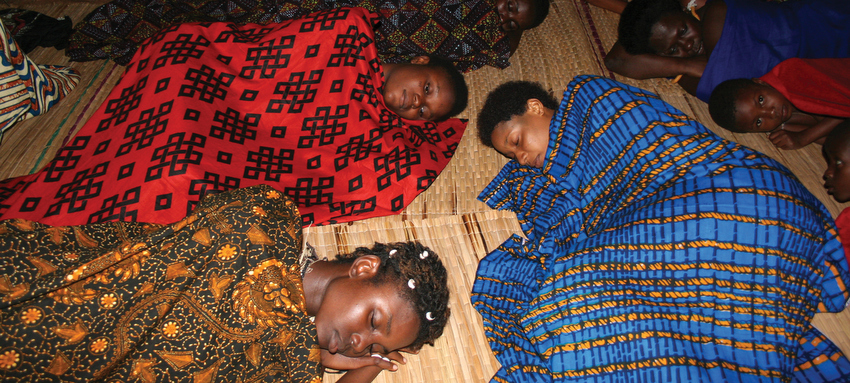
Actress Belinda Siamey (in blue) in one of the scene from PUNCTURED HOPE
According to the TROKOSI customary practice, if someone commits a crime, traditional leaders order that a young virgin girl from that family be sent to the shrine as a form of atonement. The chief priest and his entourage then genitally mutilate and sexually abuse the girl.
Against all odds, the protagonist of the story in Punctured Hope escapes the shrine. As the film follows her life from the age of innocence to premature adulthood, the viewers get to see a beautiful showcase of the real and very animated African life in a typical village.
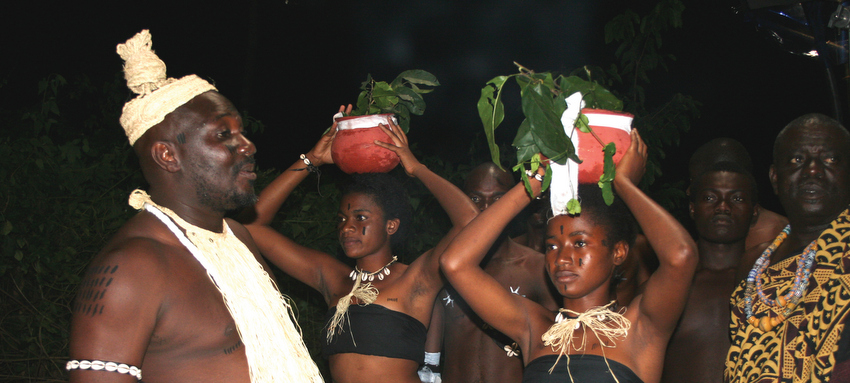
The Chief Priest performing in PUNCTURED HOPE
Punctured Hope made history in Ghana: it was the first ‘celluloid’ (35 mm) film ever shot there, and it employed a full Ghanaian cast and 98% Ghanaian crew for a total of close to 200 people. The film was shot in a real African village. Bruno Pischiutta is the co-writer, director and editor of the picture. He produced the film together with Daria Trifu.

Film Director Bruno Pischiutta and Producer Daria Trifu on the set in Ghana
“We were preparing a film in America about the subject of how virginity is lost in our times. A pastor from Ghana wrote to us saying: ‘you don’t know what’s going on here. I wrote a script and I would like to make a movie.’ At the beginning we were very sceptical. Daria and I went to Ghana and we personally visited the shrines at our own risk. We saw a fourteen-year-old girl with three kids, we saw all kinds of terrible things. After the trip and the research, we decided to bring the story to the world.
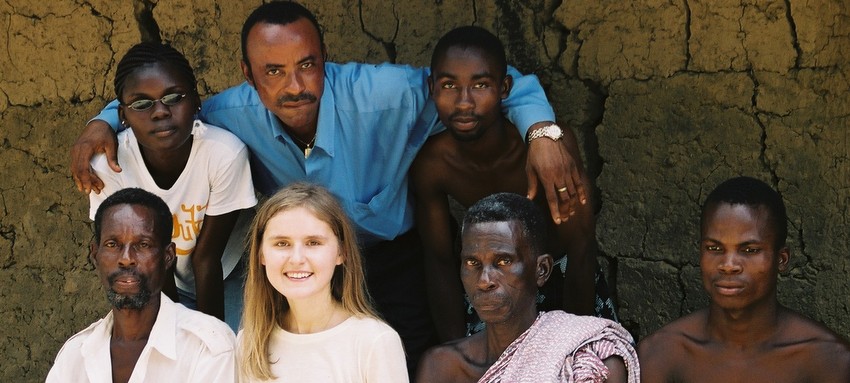
Actress Rasheeda, Co-writer Kingsley Obed (first & second on top) and Producer Daria Trifu (second on bottom row) are meeting the real Chief Priests of the Trokosi shrine they visited in Ghana. (Director Bruno Pischiutta took the picture).
The script of the pastor was very good because it was based on the life of this girl, but it was not written in an acceptable style. After we decided to make the movie, I went back to the script, re-wrote some scenes and brought the whole thing to Hollywood standards”, explains Bruno Pischiutta.
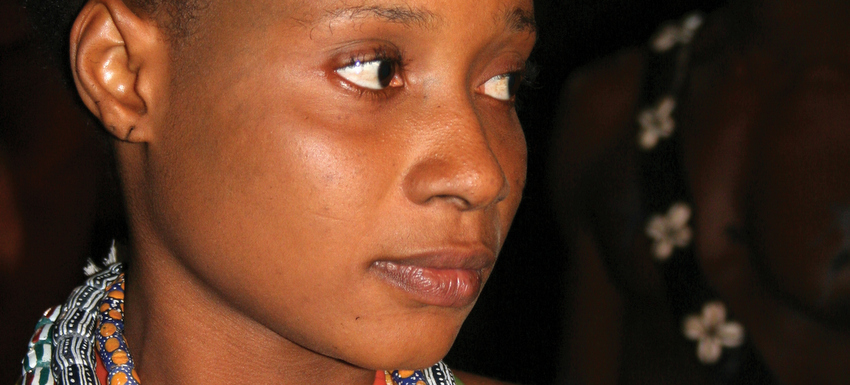
Actress Belinda Siamey plays herself in the leading role in PUNCTURED HOPE
Punctured Hope is a feature film that is inspired by a true story of slavery. The leading actress in the movie, Belinda Siamey, is actually in real life the person who inspired the movie.
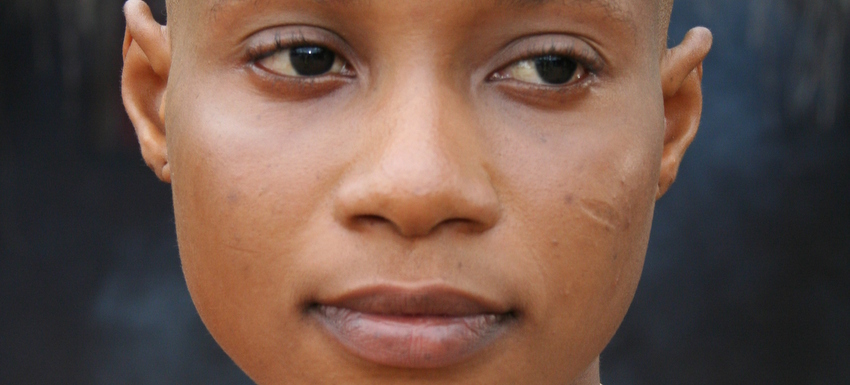
Actress Belinda Siamey
“When we did the casting, the director noticed this young girl in the middle of the crowd and he asked to meet her. When we met her, we found out that she was the one who inspired the entire movie so, he decided that she should play herself in the film.
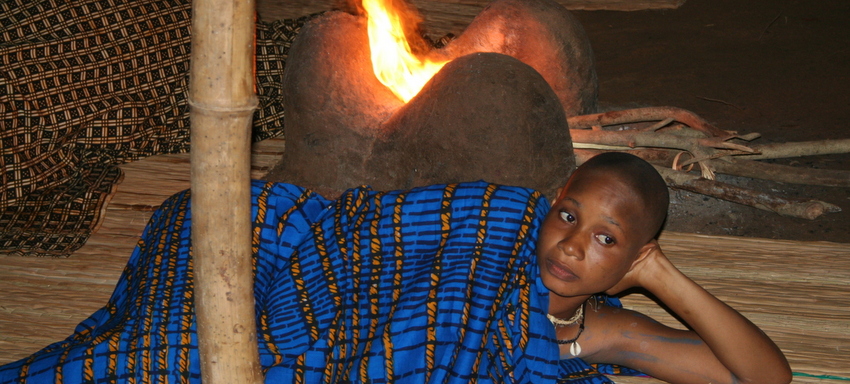
Actress Belinda Siamey, in costume, on the set of PUNCTURED HOPE.
It is a story about Trokosi, which means ‘wives of the Gods’. It is the biggest form of slavery against women that exists today in the world. It involves genital mutilation, sex abuse and it’s something that is going on, as we speak, in West Africa”, says Daria Trifu.
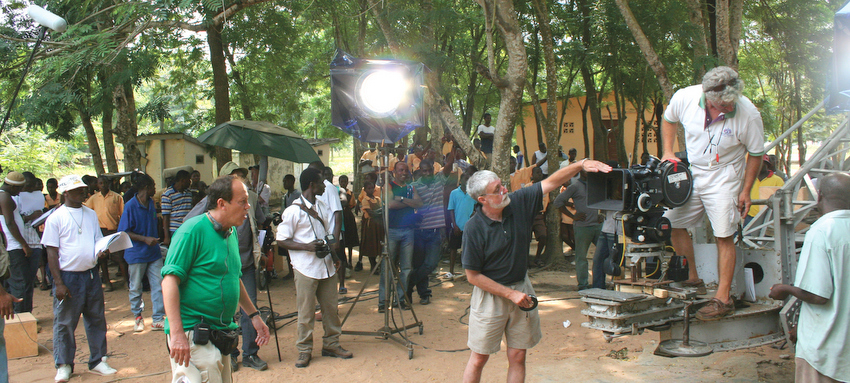
Director Bruno Pischiutta on the set.
“To make the film in Ghana, we had to be there for two months. We shot the film in 28 days. All along, until the close of the final day of shooting and shipment of the 35 mm negative rolls to Canada, we kept the subject of the film secret. Very few people knew what the film was really about because it could have put our crew and us physically in danger. When the film was completed, we did a press conference and revealed everything. The news was picked-up by Reuters and the government of Ghana published what we said at the press conference on their website. Then, they sent the police to the shrines and they closed 29 of them, but the phenomenon is so big that it will take generations to resolve”, remembers Pischiutta.
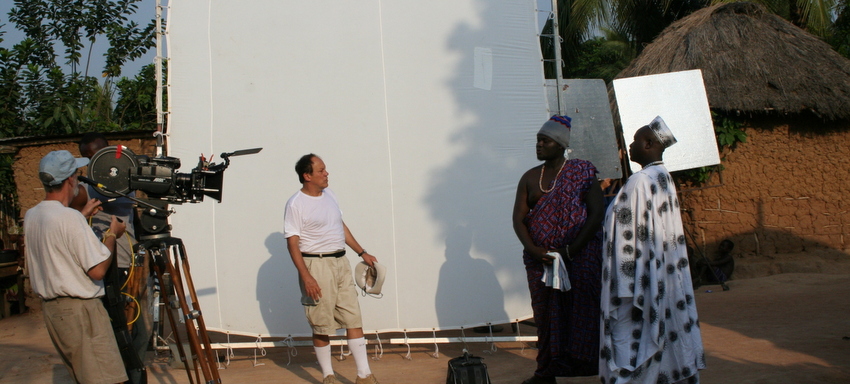
Bruno Pischiutta directing a scene of PUNCTURED HOPE.
The influence that the fetishist priests have on the whole community comes from the general believe of the population in black magic. Pischiutta explains, “Our Canadian sound-man lost his photo camera one night. Some of the crew members thought that somebody stole it and they felt very offended. They wanted to bring the matter to the shrine, in front of the black magic Chief because that is how it is done there. People who go to university also do it. My Ghanaian assistant director and I were talking about black magic. He said: ‘there are some things about America that I don’t understand and I don’t believe. And there are some things about Africa that you don’t understand and you don’t believe.’ That is just a different point of view.”
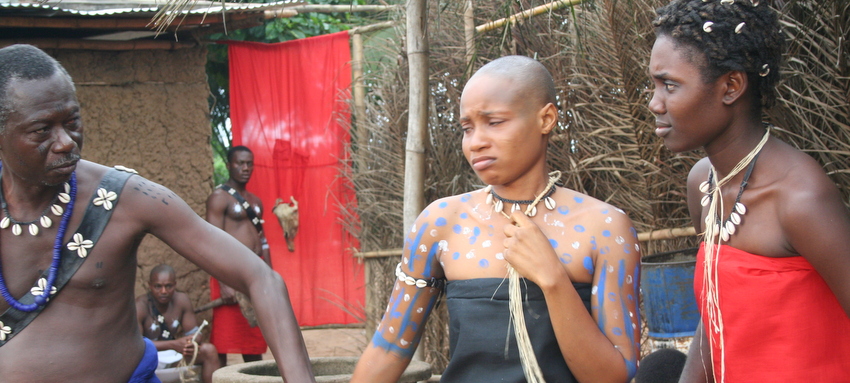
Actresses Belinda Siamey and Frost Asiedu on the set of PUNCTURED HOPE.
The film also shows a beautiful side of this part of the continent. “We wanted to show the beauty of the village and the sophistication of the people. It’s not all negative. The image is beautiful Africa, beautiful people, and beautiful places with some problems and problems are everywhere,” continues Bruno.
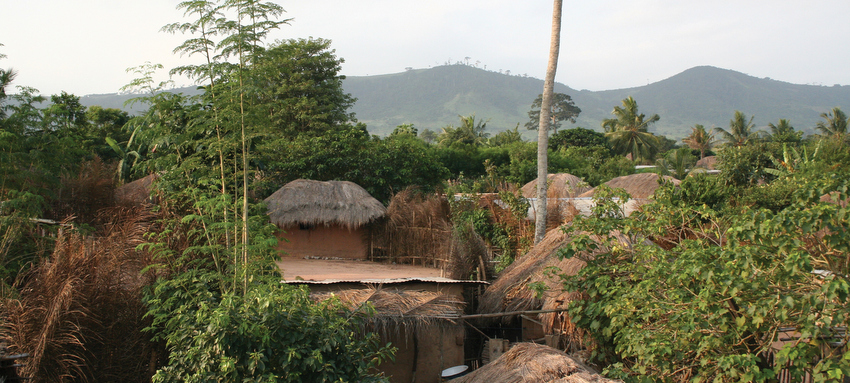
The village where PUNCTURED HOPE was filmed in Ghana.
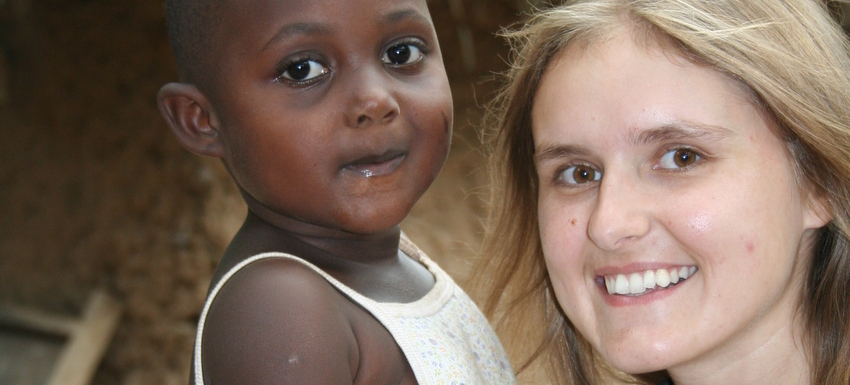
Daria Trifu with Fio, one of the 600 children living in the village where the film was shot.
“From the experience of living there for a couple of months, with the crew and the villagers, we saw so much happiness in the children, their smiles and their eyes. It was incredible,” adds Daria.
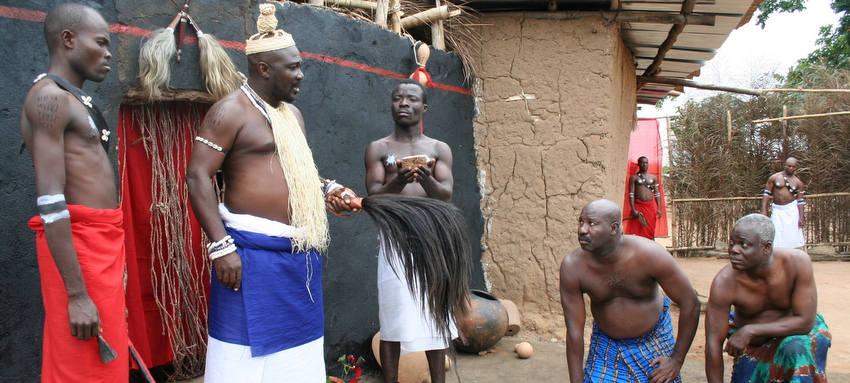
Scene from PUNCTURED HOPE.
“And another thing: every adult is in charge of parenting the children of the village. So if a child does something bad, any adult will tell them not to do that. The sense of community is big. These children have nothing but I’ve never seen so much smiling. They’re incredibly intelligent and they have a huge desire to learn,” concludes Bruno.
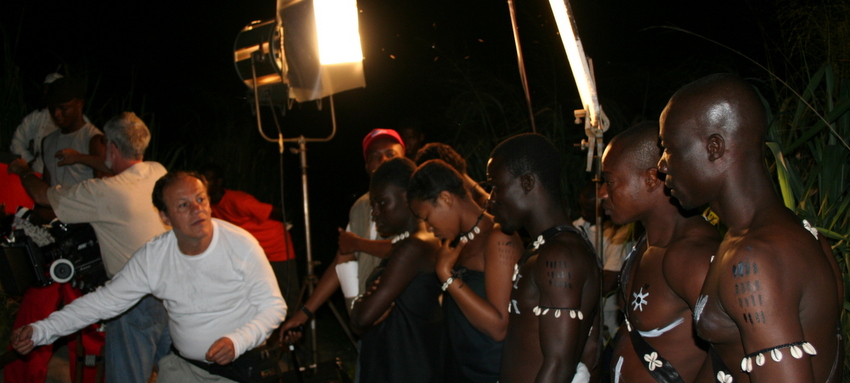
Bruno Pischiutta directing a scene of PUNCTURED HOPE in the rainforest
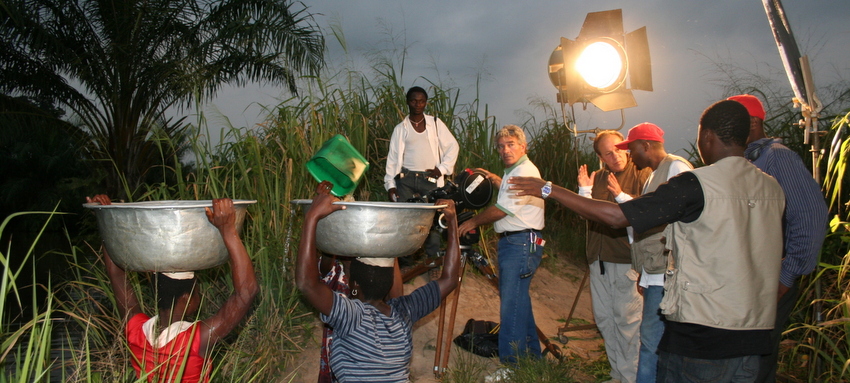
Behind the scenes: PUNCTURED HOPE
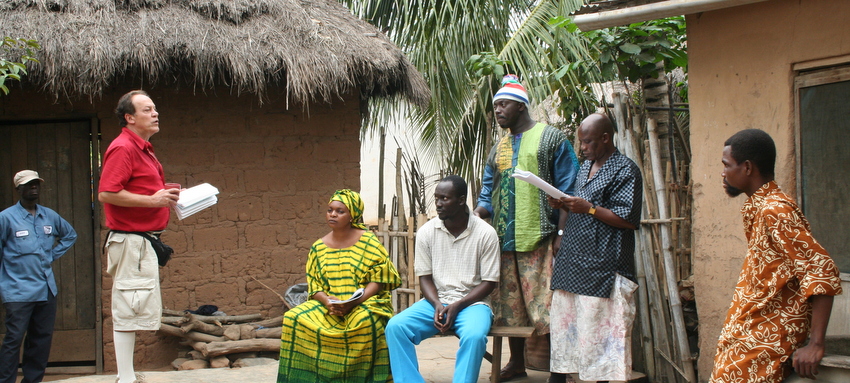
Behind the scenes: PUNCTURED HOPE
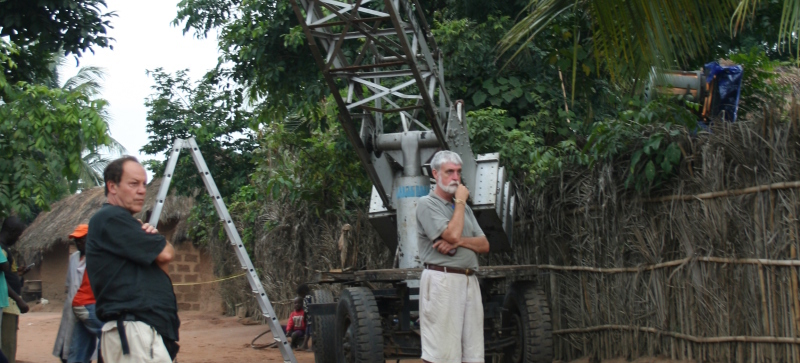
Behind the scenes: PUNCTURED HOPE
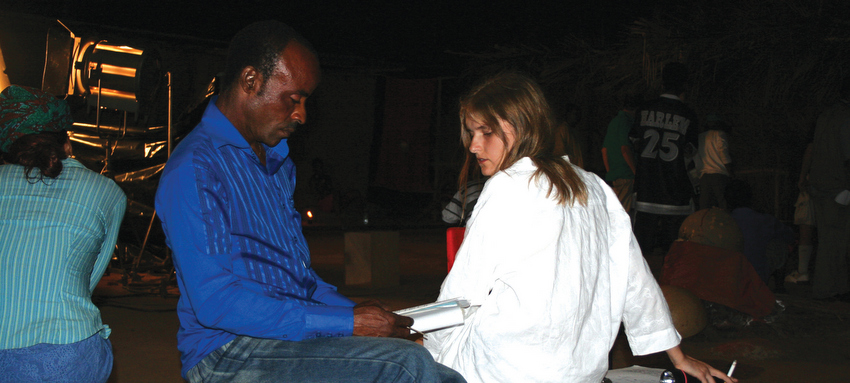
Co-Writer Pastor Kingsley Sam Obed and Daria Trifu
The filmmakers want to point out that their company makes non-violent films that are usually based on social issues of our time. Although the subject of this film is so difficult, there are no graphic scenes, and no coarse language. The film is for children too, more sophisticated adults, for students, everyone really. And it is important because it is not only about the leading character who is victim of Trokosi, it’s also about the village. The life in the village is the second leading character.
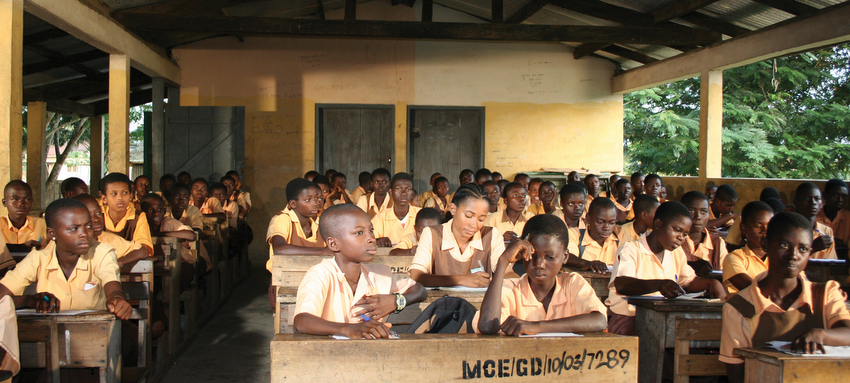
A scene from PUNCTURED HOPE.
At the end of the film, the chief of the village explains that the government of Ghana cannot do anything about the practice even though it has been outlawed. “The government can decide something but then the local villages have their own laws. In the village the law is made by the ‘king’ of the village and a committee of four or five people. And they say: ‘who are you to say that something that has worked for our grandfathers and great-grandfathers for hundreds of years is not good?’. The fear that the fetish priests instill in the people is the moral agent against criminality. If the people think that they can rob, rape, kill and that the Gods will not punish them, then there can be a very different scenario. That is what the traditionalist people say. The debate is open. That is what we tried to show in the film, and then the viewers will make their own mind,” says Bruno Pischiutta.
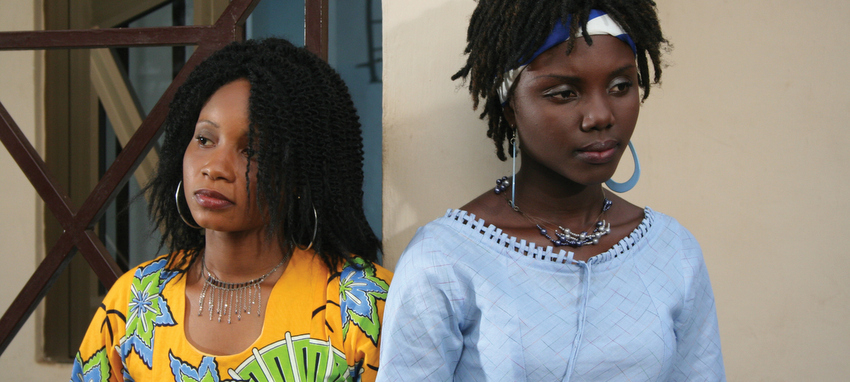
Actresses Belinda Siamey and Frost Asiedu addressing the viewers in the last scene of the movie.
There is one more innovative element that the director used in the ending of the film. For the first time in a motion picture, the two lead actresses, in the end scene of the movie, turn their eye-line to the camera and, for close to four minutes, they address directly the viewers telling them of the real suffering and the plight of the women living under the practice of Trokosi. They call the viewers to action. This is the moment in which the film becomes television. This is a closing that Pischiutta envisioned for the film in order to create a personal contact between the characters of the movie and the world viewers, for a maximum effect in bringing the story and the reality of the situation to their attention.
Selected scenes from PUNCTURED HOPE and interview with Director Bruno Pischiutta on the set of the film in Africa:
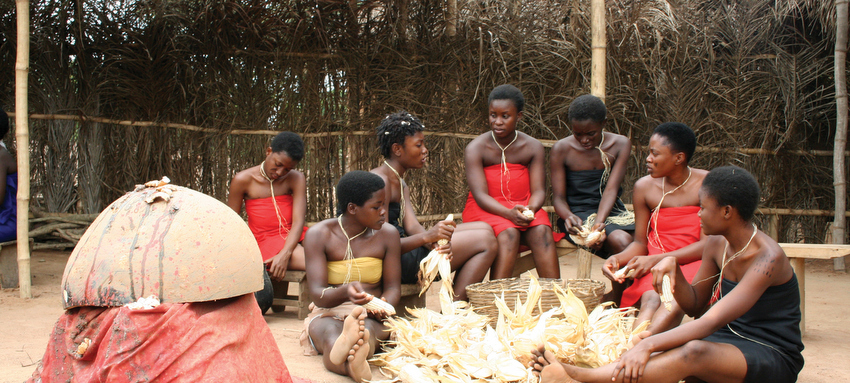
Scene from the movie: actresses performing young girls in the shrine.
“The US $5.8M budget is a respectable one for an independent production but, raising the financing wasn’t easy. In the beginning, we tried to raise it from institutional investors, but time was running out and we knew that we had to do something faster and on our own. We could not risk that the word went out in the local community before us being able to make the film, because this would have obstacle the entire production. So, with the help of two private investors and our own participation, we financed the film and rushed to production”, remembers Daria Trifu.
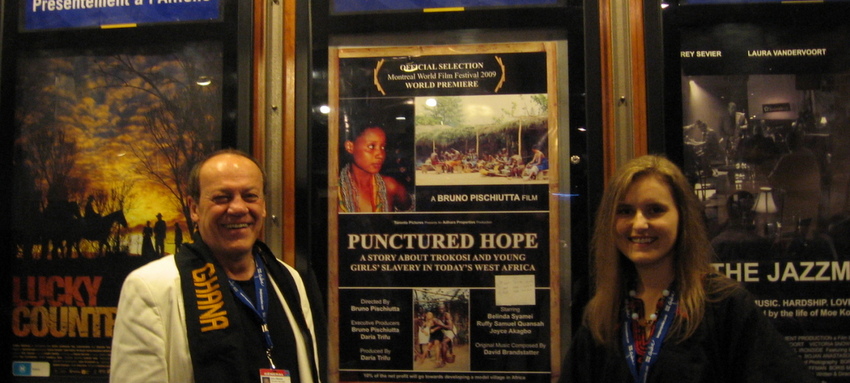
Bruno Pischiutta and Daria Trifu at the premiere of PUNCTURED HOPE at the Montreal World Film Festival.
“Our strategy, from the get-go, was to bring the story to light and spread awareness about the modern-day women slavery under the practice of Trokosi, as well as the outrageous number of young virgin girls who are victims of genital mutilation around the world”, says Trifu. To achieve this, the director and producer knew that they had to bring the film to the attention of Hollywood and the main stream media. Until now, PUNCTURED HOPE was an Official Selection at the Montreal World Film Festival and it was screened in theaters in Los Angeles (limited release) where it was qualified for Nomination Consideration at the Academy Awards. For directing the film, Bruno Pischiutta was proposed for nomination by The Political Film Society (Hollywood) alongside Clint Eastwood, James Cameron and Quentin Tarantino; the categories for which the film was proposed for were “Best Film Exposé” and “Best Film on Human Rights”.
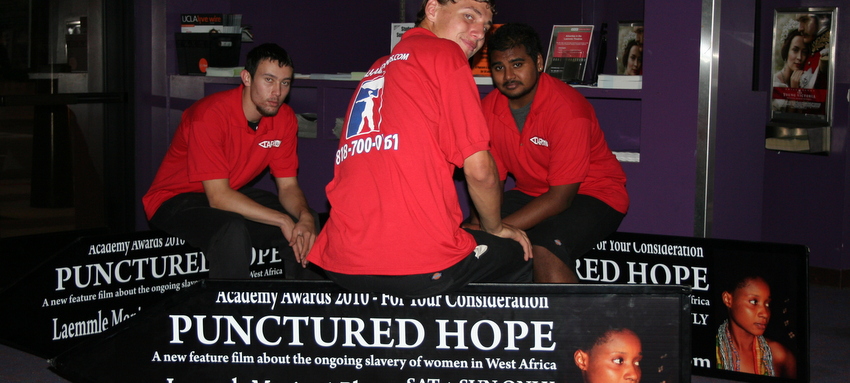
Screening of PUNCTURED HOPE in Los Angeles.
After picking-up the story in Ghana at the completion of the film, Reuters went on to follow the filmmakers to Los Angeles and interview them during the film’s cinema premiere on Sunset Boulevard. They went thus far to send a camera crew to Ghana where they also interviewed one of the film’s actresses and they produced a news segment for Africa Journal TV.
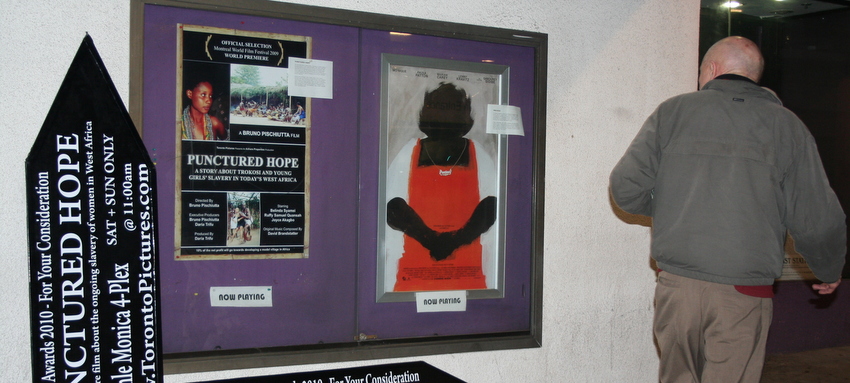
Screening of PUNCTURED HOPE in Los Angeles.
Reuters news segment, for Africa Journal TV, filmed in Ghana:
The film will be released commercially by Global Film Studio although a date is not set yet. “We hope that influential people in America and beyond can push on the international organisations to pressure local governments to end this slavery. We want to let the world know the terrifying numbers at which this phenomenon occurs. Right now we are talking about 25,000 slaves in the shrines and 130 million women genitally mutilated in the world”, concludes Pischiutta.
“I have dedicated this film in memory of my mother, Lina Maria Gardi-Pischiutta”. – Bruno Pischiutta
Richard Green Documentary, ‘I Know Catherine, The Log Lady’: Premiere in NYC, LA May 9th
Lynchian Doc I Know Catherine, The Log Lady Makes Hollywood Premiere 4/17, Rollout to Follow
In Camera by Naqqash Khlalid Launch on VOD April 29
Naqqash Khlalid’s Directs Nabhan Rizwan. In Camera stars an EE BAFTA Rising Star Award Nominee.
2025 Philip K. Dick Sci-Fi Film Festival Award Winners Announced
Vanessa Ly’s Memories of the Future Awarded Best PKD Feature
Dreaming of You by Jack McCafferty Debuts VOD & DVD for April Release
Freestyle Acquires “Dreaming of You” for April 15th Release
Hello Stranger by Paul Raschid set for London Games Festival & BIFFF
The film Is set for an April 10th Premiere at The Genesis Cinema in London (LGF) and BIFFF
Daydreamers Official Trailer by Timothy Linh Bui: Released by Dark Star Pictures
Daydreamers Vietnamese Vampire Thriller – May 2nd release


